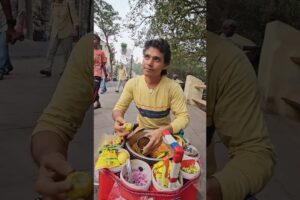
Petra, also known as the Lost City or the Red Rock City, is an ancient Nabatean holy city, carved into the rocks in southern Jordan. It’s an amazing place to see in the world and a UNESCO World Heritage Site.
Check out my Amman travel guide: http://migrationology.com/travel-guides/amman-jordan/
On Day 6 of our trip to Jordan, we woke up in the morning, had breakfast at our hotel, and continued on to the gates of Petra. The entrance ticket price of visiting Petra is 50 JD ($70.23), which is on the pricey side, but well worth it to visit this incredible city. Before going into the gates, I stopped on the outside and purchased a keffiyeh (4 JD ($5.62), the traditional Middle Eastern checkered cloth headdress. After that, I was ready to go and explore Petra!
When you see pictures of Petra, at least in my case, you can’t really tell how big it is, or the scale of it – it’s not just one building on tomb, but it’s an entire city, spread out through the red rocks of Petra, through canyons and valley and rock mountains. So it’s a huge site that can take a full day, or even many days (if you had the time) to explore. So rather than just going to see a single attractions, Petra is like walking into a historical amusement city, full of surprises, mountains to climb, and ancient tombs to explore. Just for a bit of history, Petra was built by the ancient Nabateans, likely somewhere around the 300 BC date range. The Nabateans were a nomadic Arabian tribe who were specialist in trade, especially across the Arabian desert. They would run camel caravans and trade to lands across the desert, and due to their incredible desert and sky skills, they could navigate the desert and not only survive, but thrive. They made a fortune trading frankincense and myrrh, and doing so, they made a fortune. Similar to the ancient Egyptians, when the Nabateans became very wealthy, they started to think more about their after-life, and so they decided to build tombs within the rocks of Petra. At first I was thinking that the sites of Petra were temples or houses, but the majority, especially the fancy ornate rock carving at Petra are all tombs. The city of Petra eventually became deserted, and it was hidden for about a thousand years, before being rediscovered by Swiss explorer Johann Ludwig Burckhardt in 1812.
After entering the Rock City, you first walk through a slot canyon, which was the main roadway leading directly into the center of Petra. You can either walk, or they also have horse chariots if you want to ride. One of the most famous tombs at Petra is known as the The Treasury (Al Khazneh), which was named so because some people believed there was treasure hidden high in the rock above it. The Treasury, also a tomb, is one of the best preserved and most incredible things to see when you visit Petra. The tombs are carved directly out of the side of the red rock mountains, and what’s really interesting is that the Nabateans were influenced by many different civilizations, as one can tell from the construction. The Treasury has lots of Greek influence, along with Arab and local Middle Eastern details as well. We continued hiking, and visiting many more of the tombs around Petra. Another famous place to see in the city is The Monastery (Ad Deir), which requires a hike that took about 45 minutes. The Monastery looks remarkably similar to the Treasury, but it’s just three times the size. There are some incredible views, and from The Monastery, you can do some more small hikes to get some wonderful views of the rugged mountain rocks.
For dinner we headed to a restaurant in town called Al Qantarah – a nice restaurant housed in a rock building. Along with some fantastic fresh fish, that the owner of the restaurant had caught himself, we also had a main dish of lamb and rice cooked in a claypot. The lamb was amazingly tender and the rice was fragrant. Dinner was the best way to end an incredible day tour exploring the fascinating city of Petra.
—
MY WEBSITES:
Migrationology.com: http://migrationology.com/
EatingThaiFood.com: http://eatingthaifood.com/
TravelByYing.com: http://travelbyying.com/
T-shirts & Food Guides: https://migrationology.com/store/
Resources: http://migrationology.com/travel-resources/
SOCIAL MEDIA:
Snapchat: @migrationology
Instagram: https://instagram.com/migrationology
Facebook: https://www.facebook.com/migrationology
Thank you very much for watching this Petra video!
Check out my Amman, Jordan Travel Guide: http://migrationology.com/travel-guides/amman-jordan/ (Including where to stay, what to see, safety information, and extra tips)
source







I think After early morning shower you got some red spot on your eyes….
Great video Mark!! It’s so informative. Petra is beautiful and breath-taking. It’s always been a dream of mine to go there and I’m going there in October. Can’t wait!!! ?
Anyone know the soundtrack? It’s awesome
Theres no food like arab food
Hi! ??
that. reptilian. stadium. I. see. still in good. condition. good. architecture. reptilian. hello
good. nabbatian. food. at. Petra. Phoenician. Hittite. and. bit. Egyptian. Petra. ancient. City of. reptilian. constellation. Petra dragonian. hello
It’s called shmagh not keffeya
very nice, you beutiful guy
Go into Petra
THESE ARE FROM CIVILISATION OF THE PEOPLE OF AAD WHICH THE QURAN TALKS ABOUT.. TO KNOW MORE VISIT
https://youtu.be/oUUQsrh19Lo
What hotel did you stay in?
I'm so BLOODY JEALOUS of this guy………….?
Why your eyes are red?
?☀️??
city on my bucketlist.. like in Mars…
You gonna fall off the chair one of this day while you doing that facial expression.
U lòok amazing please send me 1 t shirt
https://youtu.be/qOnGvzVceVo
Must watch !!
Arab food contains lots of calories, try to get to know Arab families, they will provide you with delicious food for free, generosity
I am Jordanian, Petra in the summer you need an umbrella, a big hat and water, you must be an athlete, the rise of a lot of stone stairs, do not be afraid of the Arabs, they are in the middle of the earth and civilizations
Waooo nice trip to Jordan
Jordan❤
ارم ذات العمادالتى لم يخلق مثله فا لبلاد———سوط عذاب dont be happy tosee this but fear of Allah
What camera is used?
That fish has zero fishiness- mark weins
Greetings from petra!
Welcome all of you in the country of security and stability Jordan. You will be happy during your visit to Jordan and Petra in particular. Welcome again to my Petra city?
By the way fadi is not a Jordanian person he is a Plastine and he don’t know alot about our Jordanian life and food I hope next time call me to show you the correct Jordanian foods thanx for your visit
Best wishes
Where is Micah?
1:55 this headdress called shmagh the kofyeh is for our brothers in Palestine and its black and white
Petra is a feminine given name. It is a feminine form of Peter, which is derived from the Greek word "petros" meaning "stone, rock". Surely this is the origin of where the terms petrified & petrification originate from – literally turned to stone ?
good video
Listen.. Petra and Madain soleh.. are same.. Madain soleh are in Saudi Arabia.. that was built by Arabian.. and Petra also built by Arabian..
My city welcom bro u should vist Ajloun in jordan
Sooooooo nice sceneries
Lovely nd beautiful Jordan
Greetings frm Pakistan
What are you trying to do here like a food show or a history show or man this is just like Parts Unknown with some local kid from the street man I'm digging it
One of my favorite videos. . Thank you for taking us all the way up, to see so much more!
Oh my! How exquisitely beautiful!
I miss Arabic food…
I think your partner is a Filipina…
I was just at The Lost City 2 weeks ago!! Amazing place!
Amazing !!!
I want that fish! I can only imagine the taste of the spice and seasoning blend. Mmm mm m
Fadi is one of the coolest guy in Jordan!